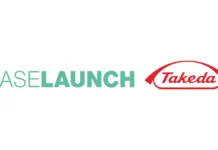Pain is something that we all go through somehow or some time. There is acute pain, like a sprain to your ankle, or chronic pain, like back pain. When pain is present, it often leads individuals to instinctively establish effective means of comfort for enhancing quality of life. There are medications for pain, like Advil or Aleve, that may help people relieve pain, but for many, discovering a natural alternative for pain relief is preferable. We will outline various means to naturally relieve both acute and chronic pain, so you can you feel better without the need for medications.
Sudden vs. Chronic Pain: What’s the Difference?
Knowing what type of pain you are in is useful for managing it effectively.
- Sudden pain is unexpected, and can be thought of as generally occurring with an injury or strain. You can experience acute pain when you twist your ankle, lift or move an object, or go for a run after many months off running. Acute pain is often intense and sharp and very much localized to one area of the body, and will usually resolve after it was incurred while your body returns to normal.
- Chronic pain persists for months or years. Chronic pain arises from an injury, condition, or illness such as arthritis, fibromyalgia or chronic muscle pain. Chronic pain can be dull and well-rooted; it is always lurking in your mind, which can or will affect perfecting your daily activities.
Different types of pain will require different approaches. Acute pain is about using methods to reduce inflammation and assist healing. Chronic pain may include changing conditions for daily living, for example, exercise, diet, and mindfulness.
Natural Ways to Manage Sudden Pain
If you have reactor sudden pain, your first choice might be to take pain medication. Although medication can work in some situations, there are natural options to help reduce discomfort very quickly.
- Ice treatment is one of the most solid natural options for sudden pain. Ice helps reduce inflammation and numbs the pain that often accompanies sudden injuries. Right after an injury, ice treatment is beneficial.
- Rest and elevation are also needed for your body to heal. Elevation can help reduce swelling and resting the affected area can prevent further strain on the injury.
- Heat treatment can be beneficial once the initial swelling has reduced. Heat treatment can relax tight muscles and improve blood flow to an area and should help promote the healing process.
- Stretching and mobility exercises: Once the pain is starting to decrease, gentle stretches should help with flexibility and help to avoid future injuries.
For instance, if you ever had a question, why top of my foot hurt all of the sudden? The reason could be a simple over-training or just wearing poorly fitting shoes. Just a couple of ice treatment and rest and elevation could just be the right treatment to decrease your pain and get you back to your lifestyle activities.
Natural Approaches for Chronic Pain Relief
Dealing with chronic pain is a little more tricky, but you can reduce your discomfort and improve your quality of life with a few strategies.
- Exercise is a very powerful natural painkiller. Exercise will strengthen muscles, support joints, and get blood flowing to reduce pain. Choose low-resistance activities such as swimming or walking so as to not stress your body too much.
- Anti-inflammatory foods such as turmeric, ginger, and fish with omega-3 are all great anti-inflammatory foods to help reduce continuous inflammation that will create chronic pain. Including these anti-inflammatory foods in your nutrition is a long-term solution to receiving relief.
- Mind-body efforts such as yoga, meditation, or even deep-breathing exercises can help you relax and become less anxious, and therefore less prone to pain. When you work on developing the mind-body skills, you create room for relaxation, therefore creating an opportunity to not dwell on your pain, as stress will always enhance pain – and you are always in a better position to manage it at a cognitive level.
- Herbal products may also provide relief with your pain, like CBD oil or valerian root. Studies suggest that these natural alternatives may have fewer negative side effects than traditional pharmaceutical treatment and can help with pain and inflammation relief.
Understanding how each medication works may be useful, knowing that medications such as Aleve vs Advil can help with short-term relief of chronic pain. For instance, Aleve is designed to last longer and is good for arthritis, Advil is more effective for short-term relief of pain. Now that we understand the differences. You can always choose what works best for you.
How to Prevent Pain with Lifestyle Adjustments
Relief from pain and recovery from pain is more than just managing pain when it occurs. It is also about managing pain and avoiding pain. Small changes in your lifestyle can make a big difference in preventing pain from happening.
- Keep active: Regular movement or activity to maintain control of your muscles is important to your muscles and joints. Daily movements and activities like walking, stretching or lifting light weights can be used with each other to keep active.
- Sitting properly or moving with good posture: Whether sitting at your desk, or lifting groceries, If you utilize your posture better, it can make a difference with protecting your back and neck.
- Get appropriate sleep: Getting appropriate sleep allows your body to heal and prevents fatigue and additional pain
- Manage stress: Uncontrolled stress or consistent stress can cause issues with pain through muscle tension or muscle tightening and stress on the body. Using techniques that provide relaxation and reduce stress, such as breathing or writing can help reduce pain over time.
When to Seek Professional Help
Natural remedies can be very helpful but there are times you need to see a professional. You will need to see a health provider if your pain does not get better for a couple of days or is worsening with time. Continuous pain may warrant attention as there could be something more serious going on that will require medical treatment.
You may also want to seek attention if you notice significant swelling, bruising, or if you are unable to move the area of pain. These may serve as red flags to defined visits to the doctor.
Conclusion
It is completely possible to manage pain naturally, and can sometimes be more successful than relying on medications. There is no shortage of natural methods to relieve pain: the use of ice and heat for an acute injury, to a change in lifestyle to help prevent chronic pain. Understanding the nature of your pain, and utilizing these natural options, means you can become healthier overall and ultimately pain free.
Consider what options are available to you as you plan your pain relief, whether that is a natural remedy or an over-the-counter medication such as Aleve and Advil.




















